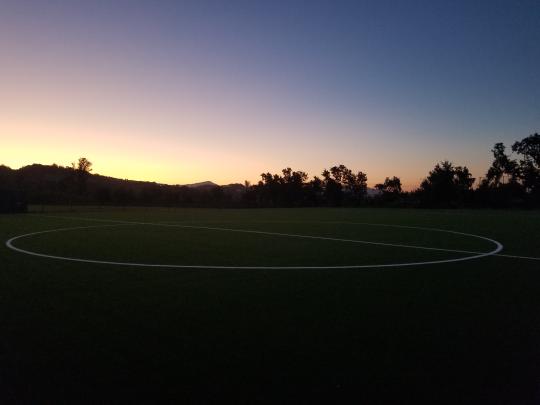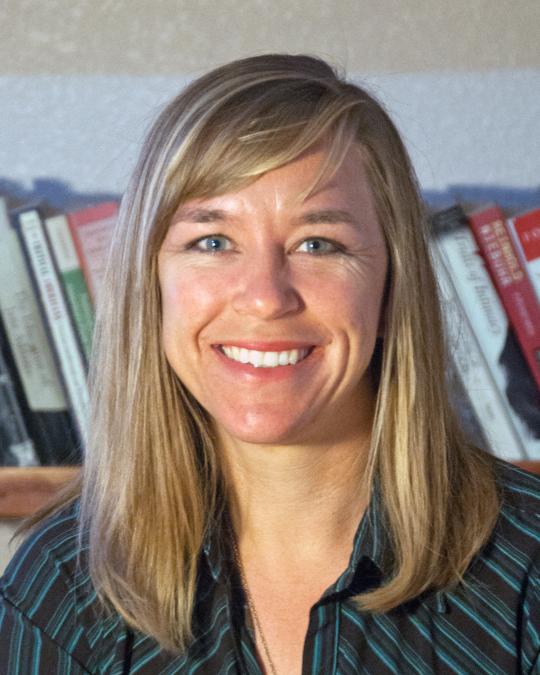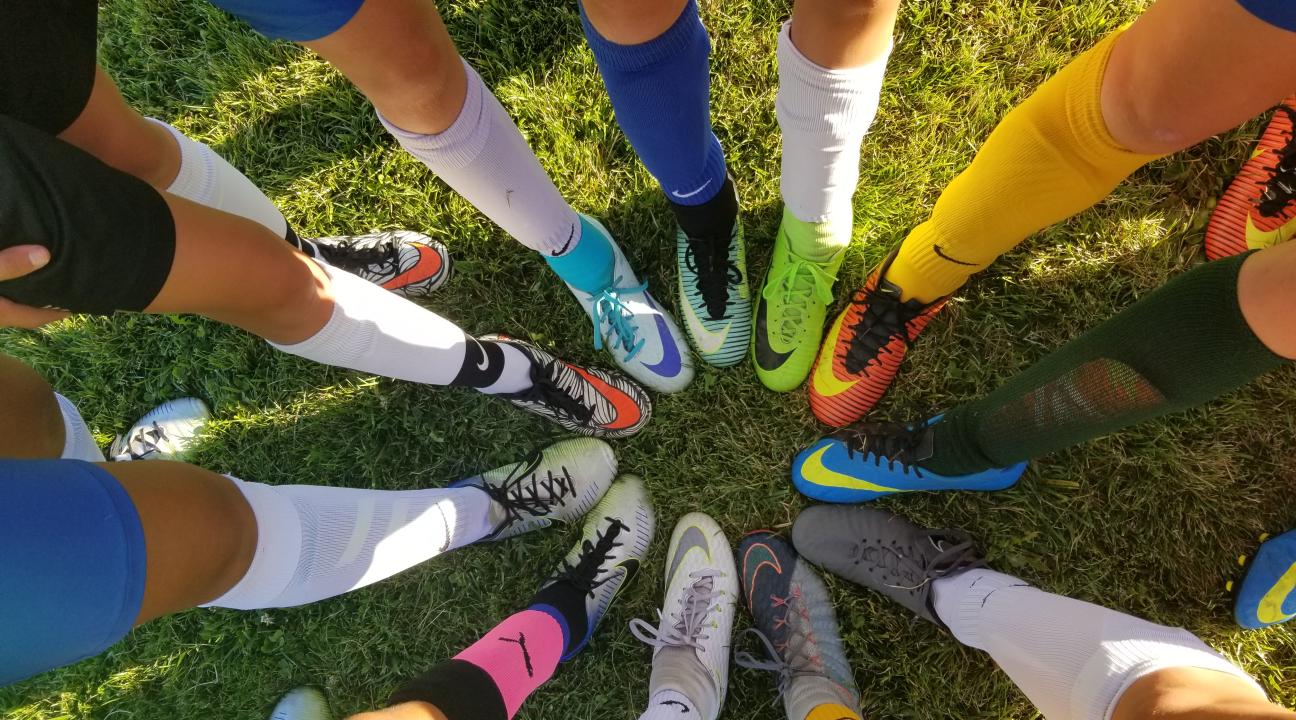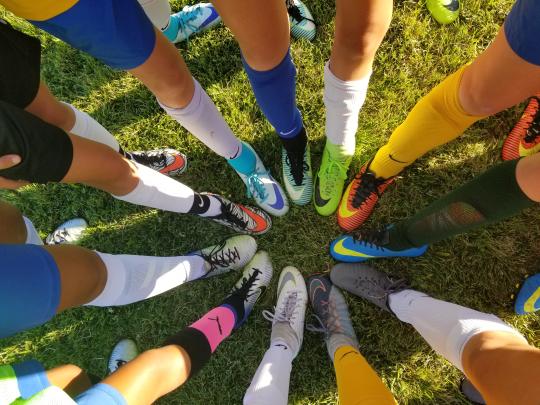On Coaching
From the time I was very small, I have adored the game Americans call soccer, which I now think of as global football.[1] I love sports and athletic endeavors of all kinds and have always savored the feeling of sweat dripping down my face or side or back, the work and the rewards, the surprises and the overcoming. My desire for athletic effort—and especially for that ball—estranged me from what midwestern America told me girls were supposed to be in the 1970s, so soccer also helped me see that gender was artifice as I strove to best my teammates and opponents, all boys, back then. I marveled at Maradona and put a print of Pelé’s feet up on my wall.
My bookishness always contrasted with my soccer-obsessiveness, and bookishness won out in my choice of university and later pursuit of a doctorate in history. The year before I went to graduate school, I coached a U12 girls’ team and earned my D certificate in coaching, imagining that in my future life as a professor I would coach girls on the side. I wanted soccer to give them the sort of gifts it had given me, and to be a female in a role overwhelmingly dominated by males at that time.
Life as a professor and parent proved far more challenging than my youthful imagination could conjure, and then life as a divorcée compounded those challenges, but soccer only ever became more important to me. My daughter started playing, delighting me. I also continued to play as a necessary release, and in 2012 I developed a fascination with FC Barcelona, home of the great Lionel Messi and provider of a sort of ancillary family for me. I developed an idea for writing a history of soccer and I created an SSU course on the topic. As my daughter started watching professional games with me, she developed the wish to play competitive soccer and not to have long off-seasons anymore. She was seven years old.
The U.S. has a “pay to play” model for youth sports, which is very bad for the country. Some clubs manage to offer a few scholarships, but in general parents pay out the equivalent of a new car payment every month so that their child can have the chance, perhaps, to play in college—and now there are professional and semi-professional opportunities for players, more for boys than for girls despite the dominance of American women in global football. I took my daughter around to various competitive tryouts, comparing programs and gauging how she felt. I was particularly interested in overcoming the divide between Latin Americans and Euro-Americans in Sonoma county, which is, unfortunately, a more pronounced divide than I had anticipated upon moving to “liberal” northern California.
The tryout she liked best was the tryout that came last. It was for Santa Rosa South club, which ran recreational teams and offered this competitive division at low cost. The (heroic) volunteer Bob Andersen—whom I recognized as a strong, fair opponent in co-ed indoor soccer—ran the tryout, and all the girls showed great athletic interest in the game. A competitive under-9 girls’ team was born that day. Bob asked for help with coaching; my daughter gave me one longing, inquiring look, and my new life as an assistant coach began. We started at the bronze level and named ourselves the Phantoms.
Just after making tenure, then, in the years I was pushing my first book out and fielding so many requests for book reviews, the vetting of manuscripts, recommendation letters, commentary on junior scholars’ work at conferences, and other professional service, I also started giving many hours per week to assisting trainings and games in the Northern California Premier League. We are fortunate to live in one of the most concentrated and competitive soccer-playing regions in the country and I am extra fortunate to be an assistant to the head coach Bob Andersen, who—along with his wife Tracy Goodman, a member of the SSU Seawolf Service Center staff—has given many volunteer years to Santa Rosa youth soccer, and who masterminds the team. Bob makes it possible for me to contribute the volitional time I have to give.
I have come to know and care for the girls on the teams so fully, sometimes I forget my own daughter is among them. When they are in pain, I hurt; when they triumph, I soar. The girls and their families help knit me into the communities of Santa Rosa and Sonoma County, letting me see into different schools and neighborhoods in a way that complements my research in the history of global football, my work in the classroom teaching its history, and my connections with soccer-loving students who are not history majors, as with one very good GE student from last spring who is becoming a soccer professional now, and whom I’ve encountered on the sideline with her own new charges: U9 girls. I see how valuable it is—for me, for my students and players, for the university, for Sonoma County—that we all connect. Many SSU faculty live outside Sonoma County, for good reasons of their own; I see in my classrooms and on the field how beneficial it is that I am able to live in Santa Rosa, and still to have an intact home there after our fires. All professors balance scholarship and praxis, what they research and what they teach. From the time this team was founded, my thought and work came powerfully together as my praxis moved beyond the classroom and instead of only teaching history I started teaching technique as well.
That was almost six years ago. The growth of the girls has been tremendous. They moved up to silver and then to gold. They went from 9v9 to 10v10 and then to 11v11 and a size 5 ball. They went from being unable to get more than two touches in juggling to double digits, from having no moves to pulling off scissors, stepovers, pull-backs, and even the Maradona. They used to be ball-chasers and now they have field sense. They know what it means to play the number 9, or 6, or 2, and they know how to shield the ball, how to cut, how to strike. They know how to take up space on the field and how to bounce back up after getting knocked down. They’re learning how to move off-ball, make creative runs, and time them. They know how to communicate on the field and off.
When we started out, they did not even know how to keep their hair out of their eyes. For years I walked around with a bunch of hair elastics in my pocket, and if I saw a girl with hanging hair I would either give her the elastic or put it up for her. And for several years after they knew perfectly well how to tie their own shoes, I would lace up loose cleats at practices or games. There is a special art to tying a boot so that the leather conforms to your foot, letting you feel the ball, and by taking the time I could connect with the player, see how she was feeling and help her release her anxieties. Now they handle their lacing and hair themselves.

Arriving for our final home game of the season.
A couple of years ago, our team got transferred to the large club Santa Rosa United, which has a roster of paid coaches, hefty fees, and ambitious programming. Our own approach remained the same: the head coach Bob Andersen and I are volunteers, so parents only pay for league fees, registration, referees, and the costs associated with travel, mostly in the Bay area. I feel proud to be part of a program that offers for hundreds per year the value that the other United teams provide for thousands, and year after year at our tryouts we were able to improve the squad because a lot of girls came out to vie for a spot. This past season, though, the United director decided to subsume our tryouts into the expensive teams’ tryouts, which meant a lot of extra volunteer time for me during Sonoma State’s busy last week of classes and ultimately zero recruits for our team. Our squad served as bait. No one explained to prospective parents the difference in our approach and so the expensive teams snapped up all the willing, paying players, including one who had been with us from the start. At a time when we needed to grow our roster, our club made us shrink instead.
As a result, this past season was a lesson in how adversity provides opportunity to grow. One injury after another with such a shallow bench, and we were struggling in every game. Attitude problems festered. Players were harping on one another’s mistakes and in games we should have dominated, we floundered. At the low point of the season, we lost a game badly with two players injured and a third suffering a concussion mid-match. It was bleak.
And then what? Then Coach Bob, who is so good at designing training sessions in tune with where the team needs development, innovated some more and gave the players just what they needed in his skillful combination of drills. We changed the way we talked to the players, emphasized positive communication and learning from mistakes. And by the end of the season the girls were shining again, connecting passes and making finishes that had eluded them for months. Morale improved and the girls started working together better than ever, showing new abilities and rising to a new cohesion.
We are between seasons now, only training once a week while we wait for 2020 to renew our State Cup bid and prepare for spring season. I appreciate the extra time. I don’t contribute nearly as much as Coach Bob does, but the time I used to spend running, cycling, and playing my own soccer has been replaced by time on the sidelines and in the car. I don’t get to grade papers while the girls warm up and I cannot volunteer for the endless university committees that want my extra energy; I am giving it to these girls, in the process of becoming young women in a hostile world. And I am beyond grateful for it.
[1] See my article, “In Spite of Boycotts, Nike’s New Colin Kaepernick Ad Will be a Winner,” Washington Post, Sept 8, 2018: [https://www.washingtonpost.com/outlook/2018/09/09/spite-boycotts-nikes-new-colin-kaepernick-ad-campaign-will-be-winner/]

Author: Amy Kittelstrom



